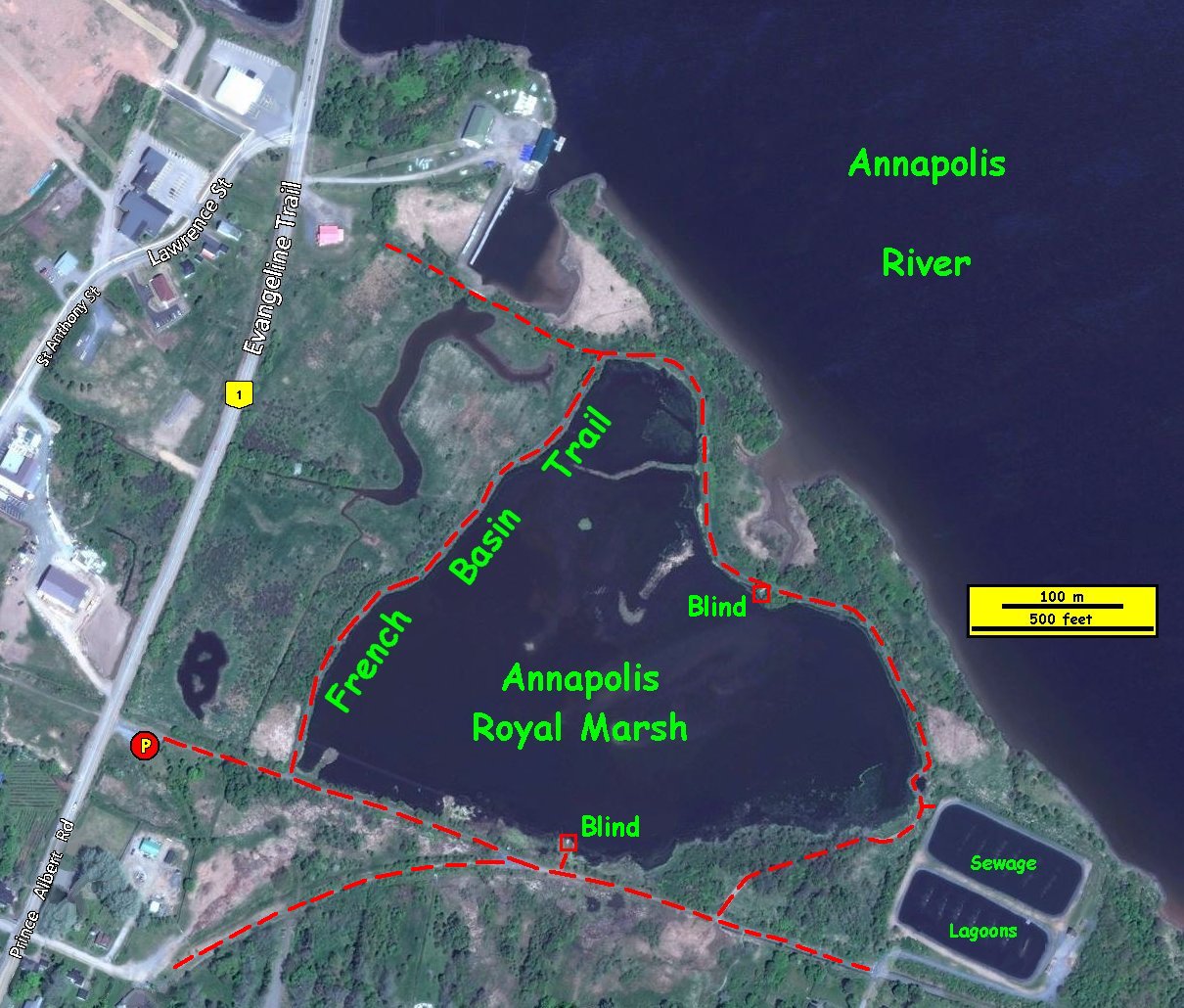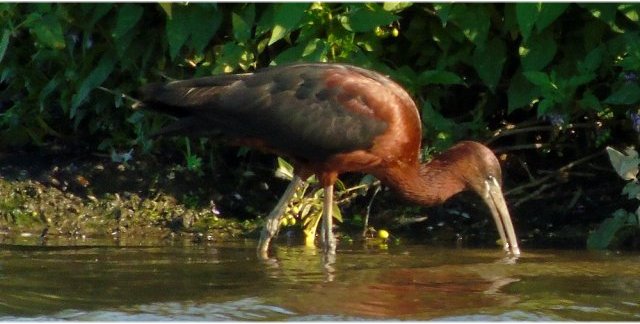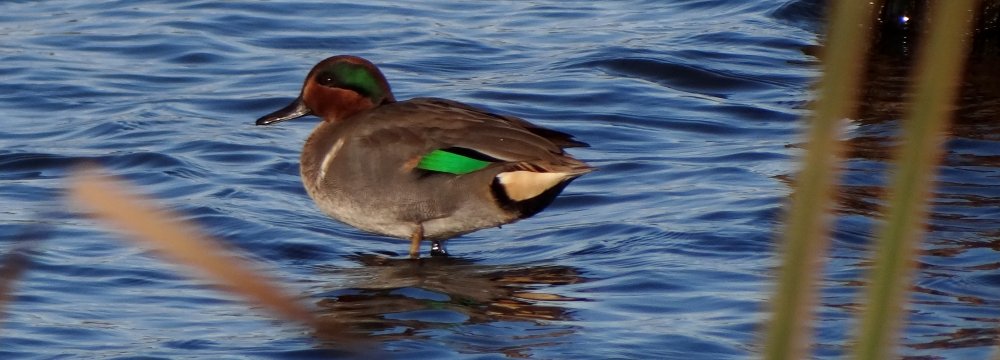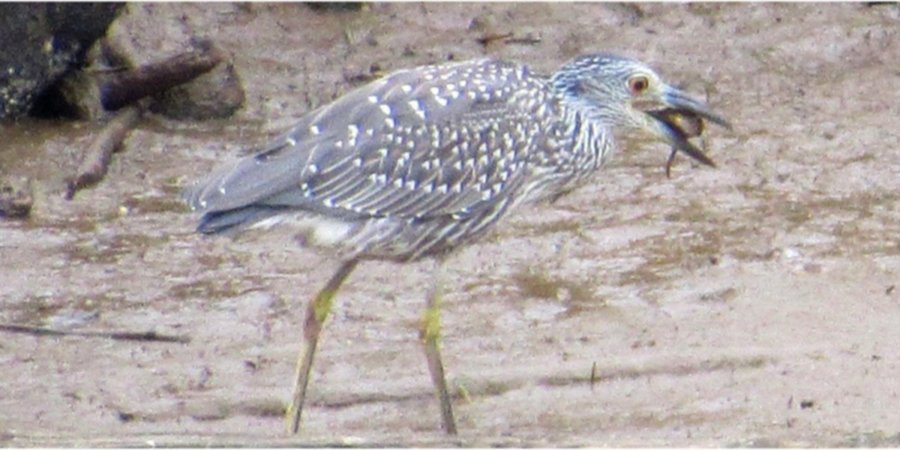Directions to this Site: Coming from either the east or west, take exit 22 from Highway 101. When you reach Highway 8, turn left (coming from the west) or right (coming from the east) both to the NNW toward Annapolis Royal. Proceed 6.9 km north, then northwest, to the juction of Highway 1 and Highway 8 (St. George Street in town) in Annapolis Royal. Turn right or ENE on Highway 1 or Prince Albert Road and go 0.3 km to the entrance to the Annapolis Royal Marsh or French Basin Trail. Turn right into the parking area. The trail begins at the northeastern end of the parking lot.

Site Description and Birding Information: The Annapolis Royal Marsh offers wonderful birding opportunities, especially for waterfowl. That makes sense since the large pond is a Ducks Unlimited inspired project. Prior to its construction there were few such places in the province and none in this area. Even better is the access to this marsh. The French Basin Trail circles the entire pond, giving excellent views of the waterfowl at any time of day. The parking area allows access to the Annapolis County Rail Trail which constitutes the southern leg of the French Basin Trail. A mere 100 metres on this trail brings you to the pond. From that point, the trail circles the pond, staying close to the edge except for the southeastern area between the sewage lagoons and the Annapolis County Rail Trail. It is 1.6 km or 1 mile around the pond.
There are two blinds for viewing the pond. One is a raised viewing platform about 350 metres along the southern leg of the main trail from the parking area or 250 metres from where the trail splits where you first reach the pond at its SW corner. The other one is on the opposite side of the pond at ground level. There are also several benches along the way to provide stationary viewing posts or rest for the weary.

There are two fingers of small islands or peninsulae on the northeastern shore that provide safe havens for the resting or nesting birds. On the more northerly finger watch for shorebirds hiding amongst the snoozing ducks. This spit was where the Glossy Ibis hung out Aug. 5 to 7, 2015. The longer finger to the south has been the preferred hangout for American Coots and Common Gallinule, when they visit in the autumn. Flocks of migrating swallows use the cattails in this longer spit to roost on spring migrations. Patches of marsh along the south segment of the loop and between and north of the two major spits provide habitat for marsh birds. Sora and Virginia Rail (occasionally) breed here. A small flock of Least Sandpipers frequents the algal bloom that sometimes in late summer "graces" the nearshore waters along the eastern shore just to the north of the sewage lagoons. The gorgeous Wood Duck breeds along the wooded shore west of the sewage pond corner. The trail cuts through the woods WSW of the sewage lagoon corner, providing access to a different habitat type. There you may see woodpeckers, finches and warblers in season.

In spring, summer and fall through to freeze up the marsh is especially good for waterfowl. They gather here in large numbers, many species breeding and more just passing through on migration, prolonged in the fall. Rarer birds sometimes stop along the French Basin Trail, including Eurasian Wigeon, Redhead, Common Gallinule, Red-necked Phalarope, Black-headed Gull, Caspian Tern, Black Tern, Great Egret, Cattle Egret, Glossy Ibis, Red-shouldered Hawk, Philadelphia Vireo, Northern Rough-winged Swallow, Blue-gray Gnatcatcher, Marsh Wren, Lark Sparrow, Yellow-breasted Chat, Orange-crowned Warbler, Scarlet Tanager, Indigo Bunting, etc.

Besides the main loop, there are several asides worth taking for a short distance. Going clockwise around the pond, the first left, off the north end of the main loop, goes WNW for 300 metres to NS-1. At around the 120 metre mark there is a view of the Nautical Centre's marina and small sheltered bay. There are sometimes yellowlegs resting on the mudflats or floating docks in the summer/fall period. There are sometimes ducks or cormorants and Great Blue Heron in the marina and its marshy back edges. There was a Yellow-crowned Night-Heron that spent a couple of days here in 2021 (Aug. 30 to Sep. 2). The first 70 m from the main loop are often good for land birds in migration.

The next aside is very short, only about 15 metres, but can be difficult. At the easternmost side of the trail, you can climb the berm of the sewage lagoons using an informal path, sometimes difficult to find and/or overgrown with thorn bushes, and view the more northerly of the two sewage ponds over or through the fence. This is a favorite spot for Wood Ducks roosting on the floating booms.
Where the main loop comes out of the woods and rejoins the Annapolis County Rail Trail south of the marsh, you may choose to take another short aside to the left or ESE along the rail trail. The 150 m from the main loop to School Street or the main entrance to the sewage facility can be very birdy, especially for skulking migrants. This is where a Yellow-breasted Chat showed itself reluctantly Nov. 15, 2020, and a Pine Warbler Nov. 5, 2022.
The last aside is just west of the blind on the south portion of the marsh. There is a "Y" junction going west; the aside is the more southerly of the branches. Watch the ground around the junction for migrant sparrows. While they can be seen anywhere along the trail, this seem to be a good spot. The aside can be birdy with passerines. It extends about 350 m W and SW to a parking lot and the entry to a municipal composting/dumping facility. It is worth checking the brush piles and surround for odd sparrows or other passerines. You can reach this area from the main loop near the loop junction nearest the parking area. It requires a 50 m clamber to get there.
Return to NeilyWorld NeilyWorld.